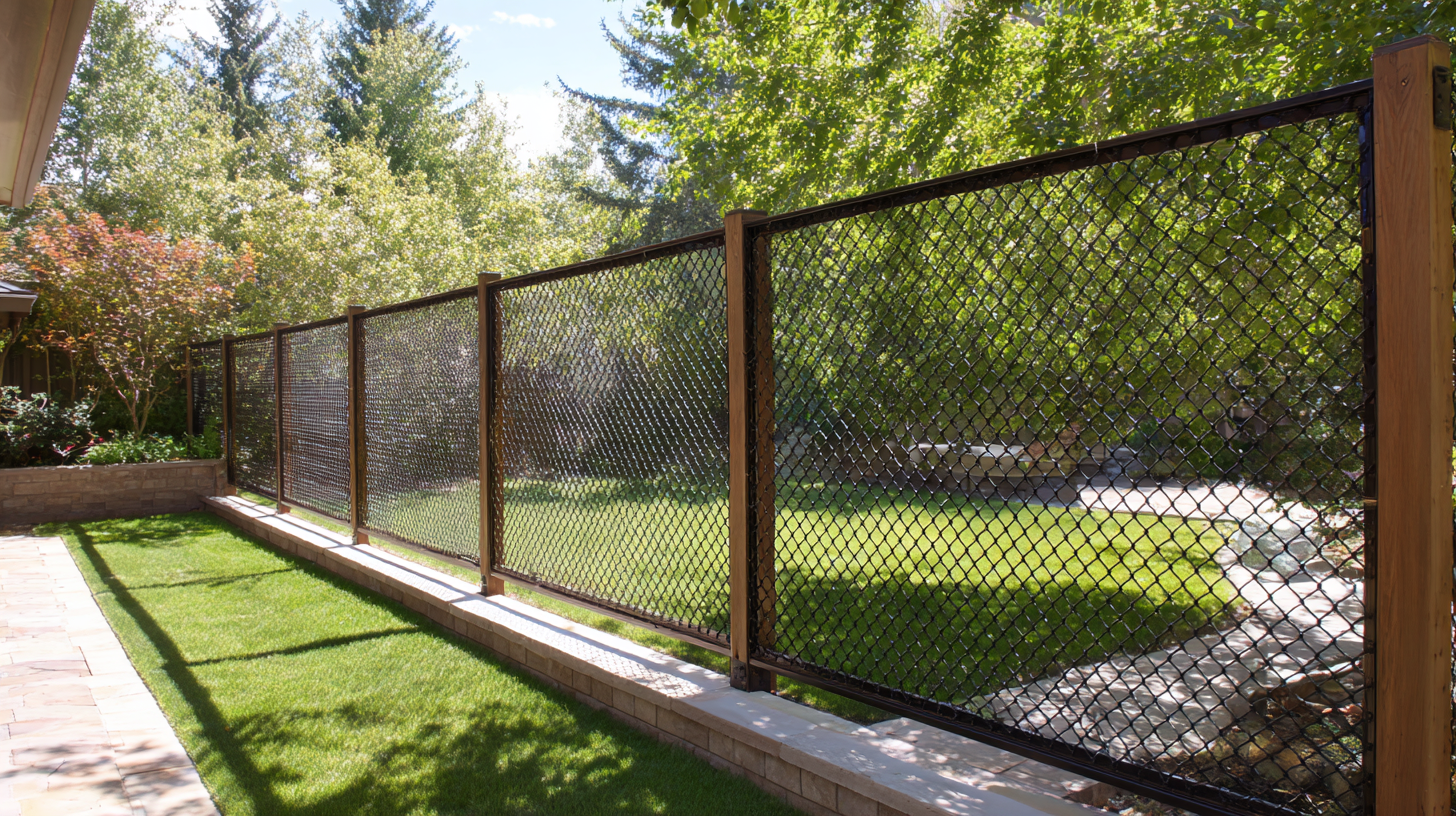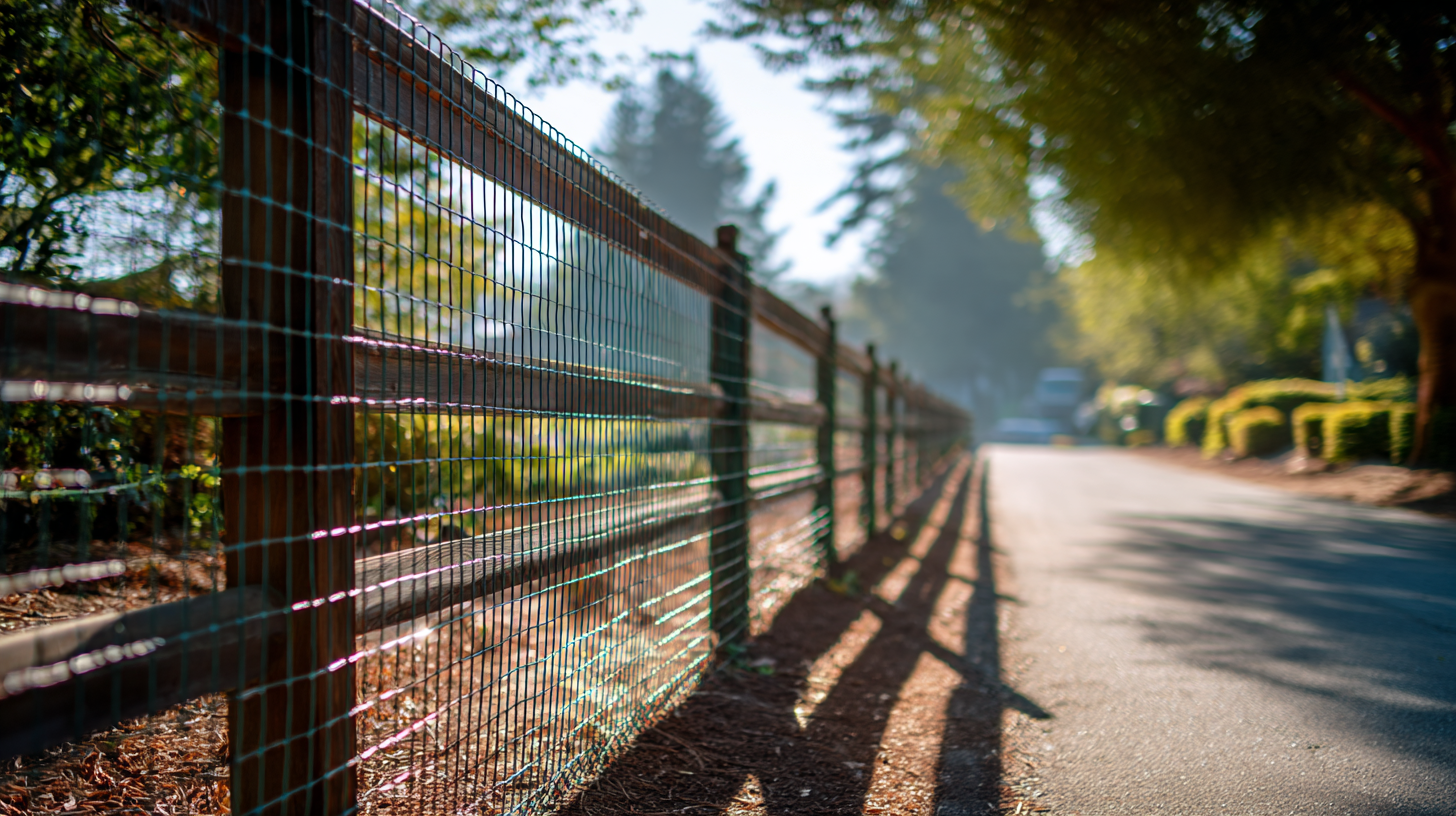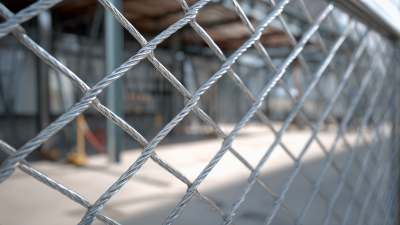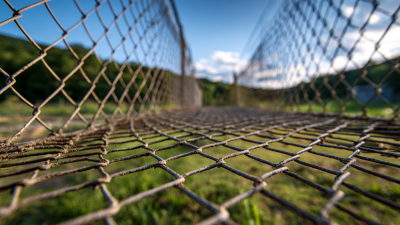Blog
- Home
- Blog
Transform Your Outdoor Spaces: Innovative Uses for Fence Netting You Haven't Considered
In today's landscape design, "fence netting" has emerged as a versatile tool that goes beyond traditional fencing solutions. According to a recent report by the American Society of Landscape Architects, homeowners increasingly seek innovative ways to enhance their outdoor spaces, with 68% of respondents highlighting the importance of aesthetics combined with functionality.
 Fence netting serves not only as a boundary but also as a means to cultivate vertical gardens, create privacy screens, or even support climbing plants, thus maximizing the utility of limited spaces. With trends in sustainable gardening on the rise, incorporating fence netting fosters both environmental responsibility and design creativity, making it an essential component for modern outdoor transformations.
As we delve into unique applications of fence netting, discover how this simple material can unlock the full potential of your exterior environments.
Fence netting serves not only as a boundary but also as a means to cultivate vertical gardens, create privacy screens, or even support climbing plants, thus maximizing the utility of limited spaces. With trends in sustainable gardening on the rise, incorporating fence netting fosters both environmental responsibility and design creativity, making it an essential component for modern outdoor transformations.
As we delve into unique applications of fence netting, discover how this simple material can unlock the full potential of your exterior environments.
Innovative Vertical Gardening Solutions Using Fence Netting for Small Spaces
 Vertical gardening is a brilliant way to maximize limited outdoor spaces, and fence netting can play a vital role in creating a lush, green sanctuary even in the smallest of areas. By attaching netting to fences, walls, or trellises, you can create an efficient vertical garden that supports a variety of climbing plants like peas, beans, and tomatoes. This technique not only utilizes the vertical space but also adds visual interest and a sense of depth to your garden. Customize your setup with hanging planters and pots to incorporate additional plants that thrive in different light conditions.
Vertical gardening is a brilliant way to maximize limited outdoor spaces, and fence netting can play a vital role in creating a lush, green sanctuary even in the smallest of areas. By attaching netting to fences, walls, or trellises, you can create an efficient vertical garden that supports a variety of climbing plants like peas, beans, and tomatoes. This technique not only utilizes the vertical space but also adds visual interest and a sense of depth to your garden. Customize your setup with hanging planters and pots to incorporate additional plants that thrive in different light conditions.
Moreover, fence netting can be repurposed for creative garden designs that enhance your outdoor experience. Consider weaving colorful fabrics or twinkling fairy lights through the netting for a vibrant, magical atmosphere during nighttime. You can also employ the net for herb spirals, creating a vertical herb garden that is both functional and aesthetically pleasing. This not only saves ground space but makes harvesting accessible and easy. With these innovative uses, fence netting transforms ordinary fences into thriving green walls that can beautify and optimize any small outdoor area.
Utilizing Fence Netting for Creating Functional and Aesthetic Outdoor Privacy Screens
Fence netting can serve as a multifunctional element in enhancing outdoor spaces, especially when creating privacy screens that blend functionality with aesthetic appeal. According to the American Society of Landscape Architects, incorporating natural materials like fence netting into outdoor designs can increase property value by up to 15%. By utilizing fence netting creatively, homeowners can achieve the desired level of privacy while adding an artistic touch that complements the surrounding landscape.
One effective tip for using fence netting is to layer it with climbing plants or vines. This not only provides a natural privacy barrier but also adds vibrancy and life to your outdoor area. Additionally, choosing netting in a color that contrasts beautifully with your garden elements can create a stunning visual focal point. Industry reports indicate that outdoor living spaces have become a priority for 80% of homeowners during renovations, making it essential to optimize every aspect of your outdoor design.
Another practical approach is to use fence netting to create rooms outdoors. By strategically placing netting around seating areas or around a fire pit, you can define spaces while ensuring they remain open and inviting. This innovative use of fence netting can enhance outdoor gatherings and add to the overall experience of your home’s exterior. Opting for weather-resistant netting materials will ensure longevity and maintain aesthetics despite exposure to the elements.
Enhancing Outdoor Play Areas: Safe Applications of Fence Netting for Kids
Fence netting is an often-underutilized resource in creating safe and engaging outdoor play areas for children. According to a 2020 report by the American Society for Testing and Materials, around 14% of childhood injuries occur in playground settings, emphasizing the need for effective safety measures. Fence netting can help delineate play zones while protecting kids from potential hazards, such as falling objects or stray pets. Its sturdy construction can serve as a barrier, ensuring that children remain within designated play areas.
Moreover, fence netting can be creatively integrated into outdoor play spaces to enhance the overall experience. For instance, netting can be used to create climbing structures or hanging play areas that stimulate children's physical development and exploration. Research published in the Journal of Child Health suggests that physical activity, facilitated by innovative play structures, contributes significantly to children's health, reducing the risk of obesity and promoting mental well-being. By considering these applications, parents and educators can transform ordinary outdoor environments into safe, stimulating playgrounds that prioritize children’s well-being and development.
Innovative Uses for Fence Netting in Outdoor Play Areas
Eco-Friendly Pest Control Strategies: Fence Netting as an Alternative to Chemicals
When looking to manage pests in your garden, fence netting serves as an innovative and eco-friendly alternative to chemical solutions. This versatile material can effectively create physical barriers that deter unwanted animals while safeguarding your prized plants. By implementing fence netting, gardeners can reduce the risk of chemical exposure to pets and local wildlife, fostering a healthier ecosystem.
**Tips:** One effective strategy is to ensure the netting is securely fastened to the ground, preventing animals from digging underneath. Additionally, consider using netting with smaller mesh sizes for protecting young seedlings from smaller pests such as rabbits or birds. You may also integrate the netting with other natural deterrents, like planting strong-scented herbs nearby, which can help ward off critters while enhancing your garden's aesthetics.
Incorporating fence netting into your garden design not only promotes a chemical-free environment but also adds an element of creativity to space utilization. With various designs and options available, you can make your garden as functional as it is beautiful, experiencing the joys of gardening without the constant battle against pests.
Transform Your Outdoor Spaces: Innovative Uses for Fence Netting You Haven't Considered - Eco-Friendly Pest Control Strategies: Fence Netting as an Alternative to Chemicals
| Application | Description | Benefits | Environmental Impact |
|---|---|---|---|
| Garden Protection | Using fence netting to create a barrier around gardens. | Prevents pests from entering, reducing crop loss. | Reduces the need for chemical pesticides. |
| Bird Netting | Applications for protecting fruit trees from birds. | Safeguards crops by deterring birds without harming them. | Promotes wildlife-friendly pest management. |
| Composting Enclosures | Use netting to create a structure for composting materials. | Keeps pests away from compost while allowing air circulation. | Supports sustainable waste management practices. |
| Support for Climbing Plants | Utilize netting as a trellis for climbing vines and plants. | Enhances garden aesthetics and plants' growth. | Eco-friendly alternative to plastic trellises. |
| Temporary Fencing | Create temporary barriers for outdoor events. | Easily assembled and disassembled as needed. | Reduces material waste compared to permanent structures. |
Transformative Landscape Design: Incorporating Fence Netting for Soil Erosion Prevention
In the realm of landscape design, fence netting emerges as a versatile tool for not only enhancing aesthetic appeal but also effectively preventing soil erosion. According to the Soil Conservation Society of America, soil erosion can remove up to 75 billion tons of topsoil from agricultural lands each year, significantly impacting soil health and crop productivity. By incorporating fence netting into garden and landscape designs, homeowners and farmers can create strategic barriers that help retain soil and reduce runoff during heavy rains.
Incorporating fence netting for erosion control reflects a broader trend in sustainable landscaping methods. Historically, the evolution of vermin control techniques, as seen in the colonial transformation of agricultural practices, illustrates the importance of protective barriers in managing agricultural integrity. Utilizing natural materials like fence netting serves a dual purpose: creating a physical deterrent against wildlife while simultaneously reinforcing the landscape, which is crucial as increasing rainfall intensity is projected due to climate change. The American Society of Landscape Architects emphasizes that innovative practices like this not only enhance the beauty of outdoor spaces but also contribute significantly to environmental sustainability efforts, making fence netting an essential element in modern landscape management.

Related Posts
-

Exploring Cable Fences Innovations at the 138th Canton Fair in 2025
-

The Future of Best Fence Netting A Comprehensive Analysis of Market Trends Towards 2025
-

7 Best Strategies to Choose the Right Fence Netting for Your Needs
-

What is the Process of Installing Welded Wire Fence
-

How to Choose the Right Welded Wire Mesh for Your Construction Projects
-

Future Trends in Best Cable Mesh Market Analysis by 2025 with Real World Examples
